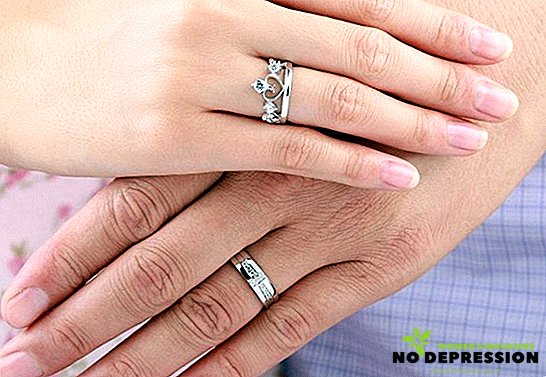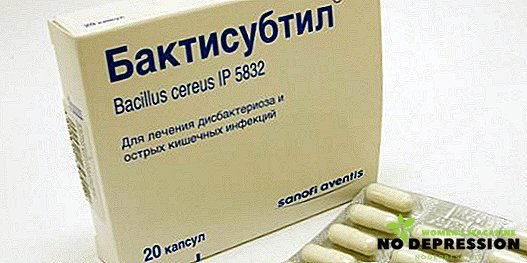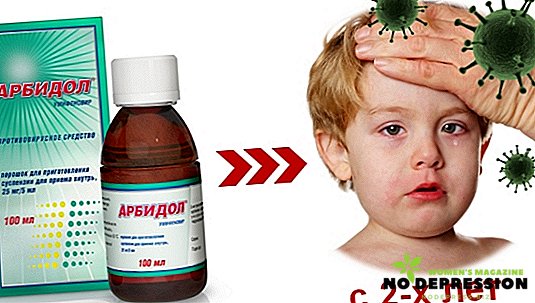Many people experience pain in the area of the gums, but do not attach any importance to this, continuing to lead a normal life. However, after some time, a slight inflammation develops into serious pain, accompanied by fever and bleeding.
The result may be the loss of a tooth, so you should immediately seek the help of specialists to determine the causes of this disease and the selection of proper treatment.
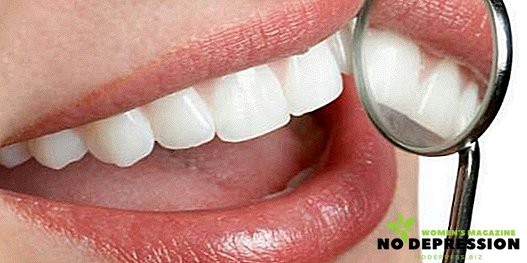
Causes and symptoms of inflammation of the gums
In order to start treatment of unpleasant symptoms, one should understand the causes of the appearance of the disease state, because each specific case is treated by a certain individual method. So, let us consider in detail the symptoms and causes of the following diseases:
| Disease | Symptoms | The reasons |
| 1. Periodontitis is an inflammatory process of the mucous tissues around the tooth and its bone bed. | · Severe toothache; · Swelling of the gums; · Swelling of the cheeks and mouth; · Shakiness of the tooth; · Rarely - the presence of a fistula (tumor on the gum, through which pus exits). | · Sinusitis; · Osteomyelitis; · Pulpitis in the advanced stage or its illiterate treatment. |
| 2. Periodontitis is an inflammatory process involving the dental-toothed tissues and is characterized by the destruction of tooth enamel. | · Itching and throbbing sensations in the gums; · Shakiness of teeth; · Bleeding; · Characteristic odor from the mouth; · Discomfort during the meal; · Exposing the base of the teeth; · strong pain; · Increase in body temperature; · Purulent discharge. | · Injured and twisted teeth; · Gingivitis in the advanced stage; · Illiterate intervention in prosthetics or restoration of teeth; · Poor oral hygiene; · Plaque growing into tartar; · Scanty and monotonous food. |
| 3. Gingivitis - inflammation, accompanied by characteristic signs | · Swelling and bleeding gums; · Dark deposits on the enamel of the teeth; · The color of the gums acquires a brown-blue tint; · Pain when touched toothbrush; · Characteristic odor from the mouth; · Gum overgrowth or necrosis; · high body temperature. | · Improper or inadequate oral care; · Formation of tartar; · Trauma to the gums protruding crown or filling, causing the proliferation of living tissue; · Hormonal imbalance. |
These symptoms of diseases that cause edema and pain, inevitably lead to unpleasant results, so measures to combat inflammatory processes should be started immediately.
Inflammation of the gums near the tooth: quick ways to get rid of pain
Quickly cope with unpleasant sensations in the oral cavity is possible only at the initial stage of the development of the disease. Inflammation in the advanced stage, with the release of purulent masses and an increase in body temperature, cannot be cured by an accelerated course.
Dim inflammation and slight bleeding are inherent in this form of inflammatory disease, like gingivitis. How to quickly cure inflammation of the gums near the tooth? The following procedures will help to quickly get rid of unpleasant symptoms:
- removal of dental deposits and stone from a periodontist;
- elimination of improperly installed fillings or crowns;
- treatment of inflammation and repeated correct filling;
- rinsing and use of antiseptic gels.
It is worth paying attention that such treatment can be performed only with a slight inflammation, which was detected in time and did not have time to develop into a severe form.
Self-medication treatment of gingivitis: drugs
Swelling and pain of the gums can also be reduced at home, using medication prescribed by a doctor. The following drugs will help relieve inflammation and numb the mucous:
- Periodontal disease (solution, gel, spray);
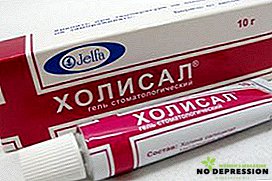
- Cholisal (dental gel);
- Maraslavin (solution);
- Polymenerol (solution);
- Metrogyl Denta (dental gel);
- Stomatofit (liquid extract).
All of these types of drugs will also remove bleeding and create a protective film from the further spread of infection. In the case of serious infectious processes, rinsing and rubbing the gels on their own will not cure the disease.
Folk methods of combating inflammation and bleeding
Alternative medicine has always been famous for the richness of folk recipes based on herbal preparations. The effect of the "correct" herbs well will reduce inflammation and help reduce itching. So, to alleviate the symptoms, you can apply the following types of herbs and plants in a complex:
- Eucalyptus, chamomile;
- Oak bark;
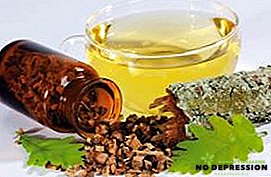
- Thyme;
- Arnica;
- Linden flowers and St. John's wort;
- Oregano and mint;
- Strawberry leaves, black currant leaves;
- Alder cones;
- Plantain;
- Burdock
All infusions should be boiled, except for chamomile flowers, which can be infused with boiling water. Heated mouth water should be rinsed about 3 times a day. Also suitable for rinsing the following anti-inflammatory solutions:
- soda;
- manganese;
- furatsilinovy.
Other methods of treatment of folk remedies can be divided into the following groups.
Compresses for gums:
- A compress of raw grated beets mixed with sunflower oil, apply for 20 minutes several times a day;
- A compress from a mixture of tooth powder and ground roots of Bergenia and Kalgan with the addition of 4-5 pieces. cloves applied to the gums for a couple of minutes, and then rinse the mouth with extract of chamomile;
- a compress of propolis, honey and lemon juice is formed into one mass and used, imposing on the gums, in the form of a “chewing gum”;
- birch tar compress applied to the gums at night;
- a compress of raw potatoes is applied to the inflamed places for half an hour.
Rinse with original means:
- mummy solution: several spoons mixed with warm water;
- infusion of saline with the addition of golden whiskers;
- solution of fermented kefir and warm water.
Treatment of gingivitis after tooth extraction
Often, after tooth extraction, due to non-compliance with oral hygiene or ingestion of an infection, an undesirable inflammation may occur.
In order not to endanger health hazards, the following rules should be observed immediately after removal:
- do not touch or mechanically remove the blood clot formed at the site of the extracted tooth;
- during the day, do not take too hot or cold drinks and food;
- use anti-inflammatory dental gel.
If all measures after medical intervention are observed, and the pain has not passed, the following means should be used:
- painkillers (Nurofen, Ketorol);
- compresses with a swab soaked in a solution of chlorhexidine;
- antihistamines that relieve swelling (Tavegil, Suprastin).
A little pain is a normal reaction of the body to the intervention, but if after all the above measures, the pain only intensifies, you should immediately consult a doctor.
Methods for the treatment of purulent inflammation of the gums
Inflammation of the gums, which takes a bacterial form, can turn into unpleasant purulent secretions. If they appear, you should immediately go to the dental clinic and follow the therapy prescribed by the doctor.
Most often, the neurosurgeon recommends inpatient complex treatment, with the use of antibiotics, antiseptic solutions, and poultice cleaning. Self-treatment is strictly prohibited and may lead to irreversible consequences.
Before visiting the doctor, you can take some relief (but not healing) actions:
- take painkillers;
- rinsing the mouth with a solution of chlorhexidine or furatsilina;
- rinsing with a solution of peroxide (3%) in the ratio with water 1: 1;
- It is forbidden to use warming ointments, apply heating pads that provoke the spread of pus;
- cold compresses with ice can be applied;
After analyzing the microflora of the festered area of the gums, the doctor prescribes treatment.
Preventive actions
In order not to aggravate the situation to the stage of purulent abscess, you should regularly follow certain preventive rules:
- Closely monitor the oral cavity, properly cleaning the teeth from plaque, paying particular attention to the base of the tooth, where inflammatory reactions occur most often.
- Highlight the procedure for brushing your teeth for at least 2-3 minutes, trying to perform these manipulations after each meal and paying attention to cleaning the plaque from the tongue.
- Try to change the brush once in 1-3 months, it is desirable to use the electric option, more thoroughly cleaning the coating.
- To establish proper nutrition. In the diet include citrus, rich in vitamin C, which prevents bleeding gums. Also eat foods containing calcium to strengthen dental tissue. Be sure to learn how to eat vegetables raw, because hard fibers help to remove unnecessary plaque.
- Change the rhythm of life by establishing a correct sleep. Stressful situations, working with chemical agents and lack of sleep lead to a deterioration of the body state and provoke unwanted inflammation.
- Eliminate bad habits. Nicotine and alcohol destroy teeth and cause the oral cavity in a deplorable state.
By applying these simple rules in practice, you can avoid a number of unpleasant diseases affecting the gums and tooth enamel.
Conclusion
Speaking of inflammation of the gums, we should once again mention some serious points that will help to heal from an unpleasant illness:
- Before taking any measures to treat the inflammatory process, you should identify the symptoms of the disease, and for this it is best to seek help from a qualified specialist.
- If the disease is characterized by an initial stage of development and not a pronounced process, you can use traditional methods of treatment.
- With deep damage to the teeth and gums, medical assistance is required, which will be provided to the patient in the inpatient clinic of the dental clinic.
And another remedy for gums is described in the next video.





